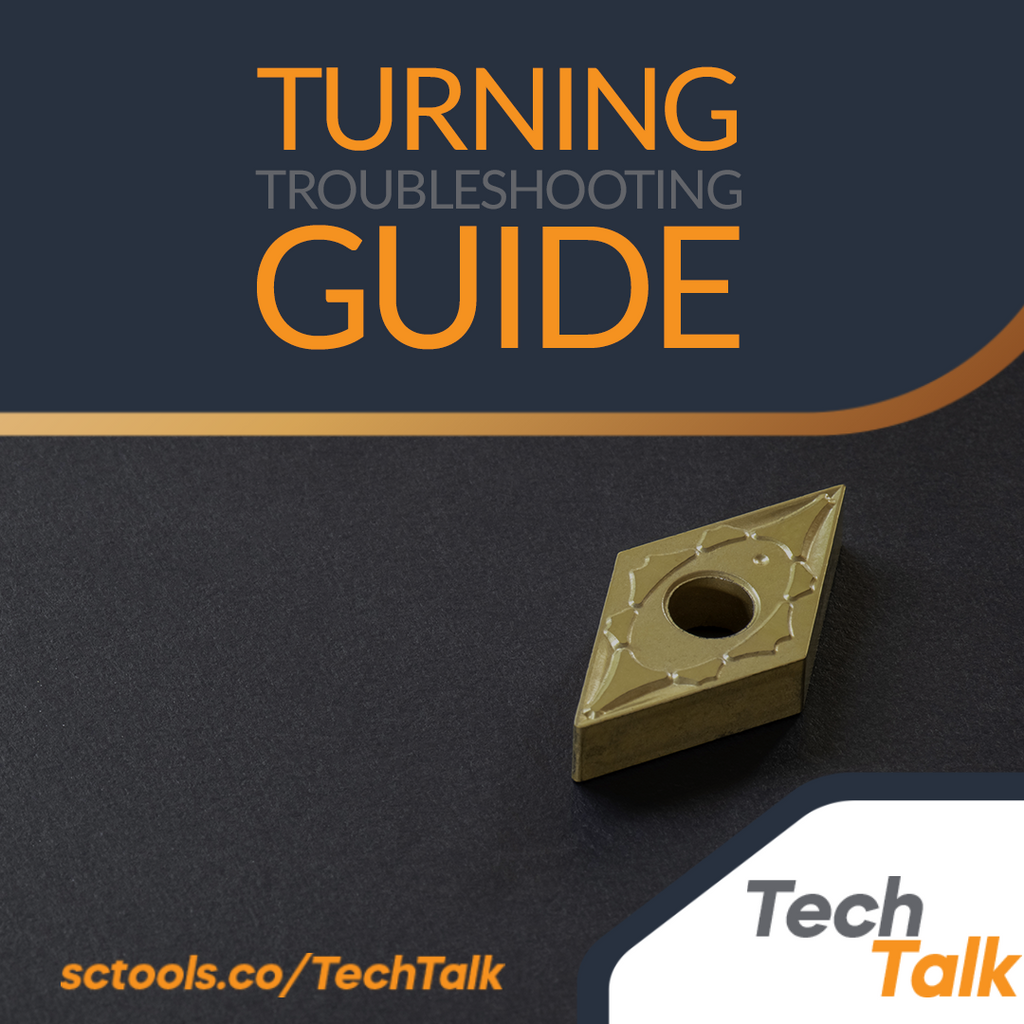Turning Troubleshooting Guide
How Does Turning Work?
In machining, turning is used to remove material and rotate parts by cutting away unnecessary material. The rotation of an object, such as a cutting tool, is required for a lathe turning operation. A finished piece of work is attached to a fixture and then to a machine that turns at high speed.
Regardless of how good the carbide cutting tools are, they will eventually fail due to the high temperatures and pressures they experience during machining. The ideal way to maximize production and reduce tooling costs is to identify the causes of failures to take preventative measures. An error often has multiple causes, making it difficult to determine where it originated.
Several causes can trigger cutting tool failure. Using the wrong diagnosis can result in activities that exacerbate rather than alleviate the problem. Many mistakes can happen during the machining process, and we'll look at how to fix them in the following parts of this guide.
Cratering
A concave wear pattern on the rake surface of an insert characterizes the type of failure known as "cratering." This wear pattern happens as the chip wears away small particles of the cutting tool as it travels over the rake surface.
If not addressed, the crater will continue to erode until it breaks through to the cutting edge, causing the insert to fail. Crater eradication isn't always possible, but in many cases, crater growth can be controlled so that normal wear on the flanks of the crater doesn't cause the crater to fail.
Corrective Measures
- Reduce the pace of feeding.
- Reduce the rate (SFM).
- Coated grades or cermets may be used.
- Make use of coolant.
Thermal Cracking
Thermomechanical failure manifests itself on a cutting tool as cracks perpendicular to the cutting edge. The cutting tool cannot withstand severe temperature fluctuations during interrupted cutting operations, leading to this type of failure.
Although carbides are poor heat conductors, they tend to retain the heat generated during such operations rather than pass it along. Due to this, the overheated cutting edge cracks under extreme thermal stress.
Corrective Measures
- Correctly apply coolant.
- Reduce the speed rate.
- Use coated grades.
- Reduce the feed rate.
Built-Up Edge
Built-up edge failure occurs when intense stresses at the cutting tool-workpiece interface tiny fuse particles of the workpiece to the cutting tool. It is common for this type of failure to occur when a soft, malleable workpiece is machined at speeds lower than recommended. Chipping of the cutting tool is common when the tool has a built-up edge, which decreases the cutting effectiveness of the cutter.
Corrective Measures
- Enhance the speed (SFM).
- Accelerate the pace of the feed rate.
- Utilize coated or cermet grades.
- Put in the edge (smaller hone) together.
Chipping
This failure mechanism known as "chipping" occurs when small pieces of the carbide insert are chipped away from the cutting edge during the machining process. Due to the higher cutting pressures at the chipped cutting edge, the cutting edge becomes inefficient, resulting in a catastrophic failure soon after.
There may not be any obvious signs of a chipped surface, and it is easy to mistake microscopically occurring chipping for regular flank wear if you don't look closely enough. Many things could be to blame, like an ineffective machine tool or a lack of rigidity when setting up the equipment and a weak cutting edge and workpiece deflection.
Corrective Measures
- Use a more robust grade.
- Consider the preparation of the edge.
- Assess the system's stiffness.
- Increase the angle of the lead.
Unforeseen issues can occur during manufacturing operations. We at SCTools understand the problems that can occur during machining, which is why we have the capabilities, technology, and tools in place to provide your shop with a complete solution for manufacturing and assembling machined components. Getting in touch with us will direct you towards the right path.
 |
If you have any questions about carbide cutting tools, end mills, drills, etc. be sure to reach out to us @ sctools.co/Home or call us at (877)737-0987. We help you machine better! |



Comments (0)